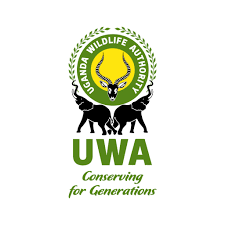Gorilla Trekking Safaris
Gorilla Trekking Safaris
Gorilla trekking safaris are often described as one of the most powerful wildlife experiences on the planet. Unlike a game drive where you view animals from the comfort of a safari vehicle, trekking with gorillas requires you to step into their world. You move on foot through thick forests, climb slopes draped in mist, and follow trails left by trackers until you find yourself face-to-face with a family of mountain gorillas. It is a journey that blends physical challenge, anticipation, and raw emotion, culminating in an encounter that is humbling and unforgettable.
The rarity of this experience makes it even more special. With fewer than 1,100 mountain gorillas left in the wild, gorilla trekking is not just an adventure—it is also a privilege and a reminder of the importance of conservation. Safaris in Uganda, Rwanda, and the Democratic Republic of Congo offer travelers the chance to join this journey, each destination providing unique landscapes, cultural insights, and trekking conditions.
Where to Go for Gorilla Trekking Safaris
Uganda
Uganda is home to almost half of the world’s remaining mountain gorillas, making it the leading destination for gorilla safaris. The gorillas are found in two parks:
-
Bwindi Impenetrable National Park – A UNESCO World Heritage Site, Bwindi is dense, rugged, and magical. The park has over 20 habituated gorilla families available for trekking, giving visitors multiple options. Each trek feels like entering a natural cathedral, where towering trees and thick vegetation surround you in an atmosphere of mystery and awe. Bwindi is also unique for offering the gorilla habituation experience, where you spend four hours with a semi-habituated group as researchers work to acclimatize them to human presence.
-
Mgahinga Gorilla National Park – Though smaller, Mgahinga is part of the Virunga Volcanoes and offers equally spectacular experiences. Its bamboo forests, steep volcanic slopes, and open views make trekking here slightly different. Mgahinga also allows visitors to combine gorilla trekking with golden monkey tracking, adding another rare primate to the safari.
Rwanda
Rwanda’s gorillas are found in Volcanoes National Park, part of the Virunga Massif shared with Uganda and Congo. The park is just a two to three-hour drive from Kigali, making Rwanda the most accessible gorilla trekking destination for short itineraries. Treks here are well-organized, and the park is famous for being the research base of Dian Fossey, the pioneering primatologist whose work helped bring global attention to gorilla conservation. Rwanda offers fewer gorilla families than Uganda, but the short distances and well-developed tourism infrastructure make it an excellent choice for high-quality, focused gorilla safaris.
Democratic Republic of Congo
The Congo offers the most rugged and adventurous gorilla safaris in Virunga National Park, Africa’s oldest national park. Treks here have a wilder edge, with fewer tourists and a raw atmosphere that appeals to intrepid travelers. Virunga is also unique in hosting both mountain gorillas and the rarer Eastern lowland gorillas, found in Kahuzi-Biega National Park. While safety and political stability can affect travel here, Congo provides unmatched opportunities for those seeking something different.
The Gorilla Trekking Experience
A gorilla trek begins before dawn. After breakfast, travelers gather at the park headquarters for a briefing. Rangers explain trekking rules, gorilla behavior, and what to expect. Groups are limited to eight people per gorilla family, ensuring intimate and low-impact visits.
The trek itself is an adventure. You may walk for an hour or for several, climbing slopes, crossing streams, and pushing through thick vegetation. Along the way, the forest comes alive with bird calls, butterflies, and sometimes other primates like colobus monkeys. The anticipation builds until trackers signal that the gorillas are near.
And then, the forest seems to pause. You step into a clearing and there they are: a family of gorillas going about their daily life. The silverback, massive and powerful, watches calmly as the leader of the group. Females care for infants with gentle affection, while young gorillas play, tumble, and sometimes curiously approach the visitors. For one hour, you are part of their world. Cameras click, but most visitors find themselves simply watching in awe, realizing they are sharing space with creatures that are so much like us.
Conservation and Responsible Tourism
Gorilla trekking is tightly controlled to ensure the protection of the gorillas. Only a limited number of permits are issued each day, and strict rules apply: no touching the gorillas, maintaining a safe distance, and avoiding treks if you are sick. These measures protect gorillas from human diseases and stress. The high permit costs are not just a fee; they directly fund conservation and community projects, ensuring that local people benefit from tourism and have a reason to protect the forests.
Uganda’s gorilla permit costs $800 per person, Rwanda’s permits are $1,500, and Congo offers the most affordable option at $400–500, though with more logistical challenges.
What to Combine with Gorilla Trekking
Most gorilla trekking safaris are combined with other adventures to make a complete itinerary:
-
In Uganda, travelers often add wildlife safaris in Queen Elizabeth National Park, chimpanzee tracking in Kibale Forest, or the powerful Murchison Falls on the Nile.
-
In Rwanda, gorilla trekking is frequently paired with golden monkey tracking, cultural village tours, or relaxation at Lake Kivu. Akagera National Park also provides classic game drives.
-
In Congo, treks may include hikes up Nyiragongo Volcano, where you can peer into the world’s largest lava lake.
Best Time to Go
Gorilla trekking is possible year-round, but the best months are during the dry seasons: December to February and June to September, when trails are drier and more manageable. The wetter months are equally rewarding, with fewer tourists and lusher forests, though trekking can be more slippery and challenging.
Conclusion
Gorilla trekking safaris are not just about wildlife—they are about connection, conservation, and perspective. The trek challenges you physically, rewards you emotionally, and leaves you with memories that shape your view of the natural world. Whether you trek in Uganda’s Bwindi, Rwanda’s Volcanoes, or Congo’s Virunga, standing in the presence of gorillas is a moment that transcends travel. It is a reminder that some of the greatest treasures of our planet are fragile, rare, and worth protecting at all costs.




